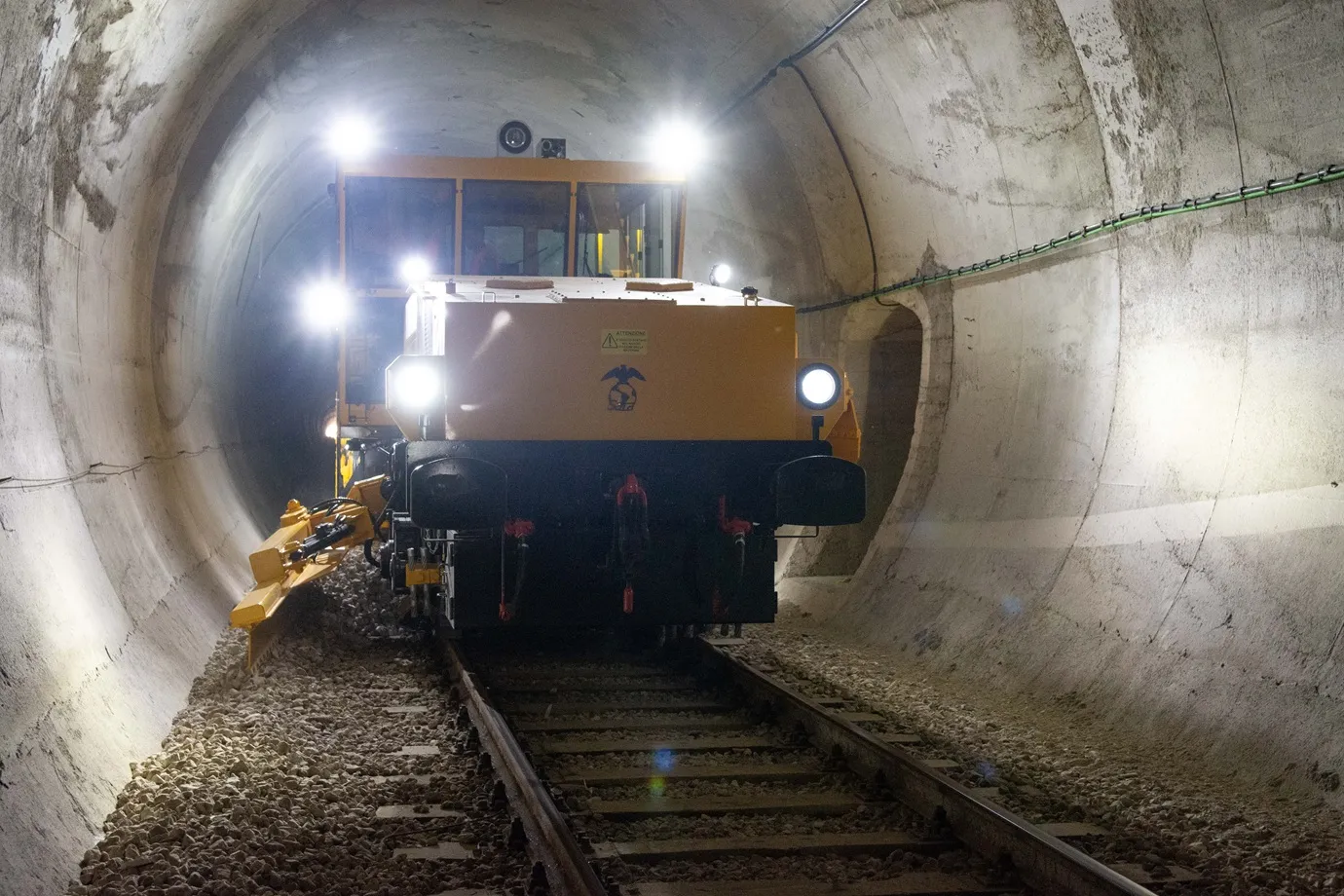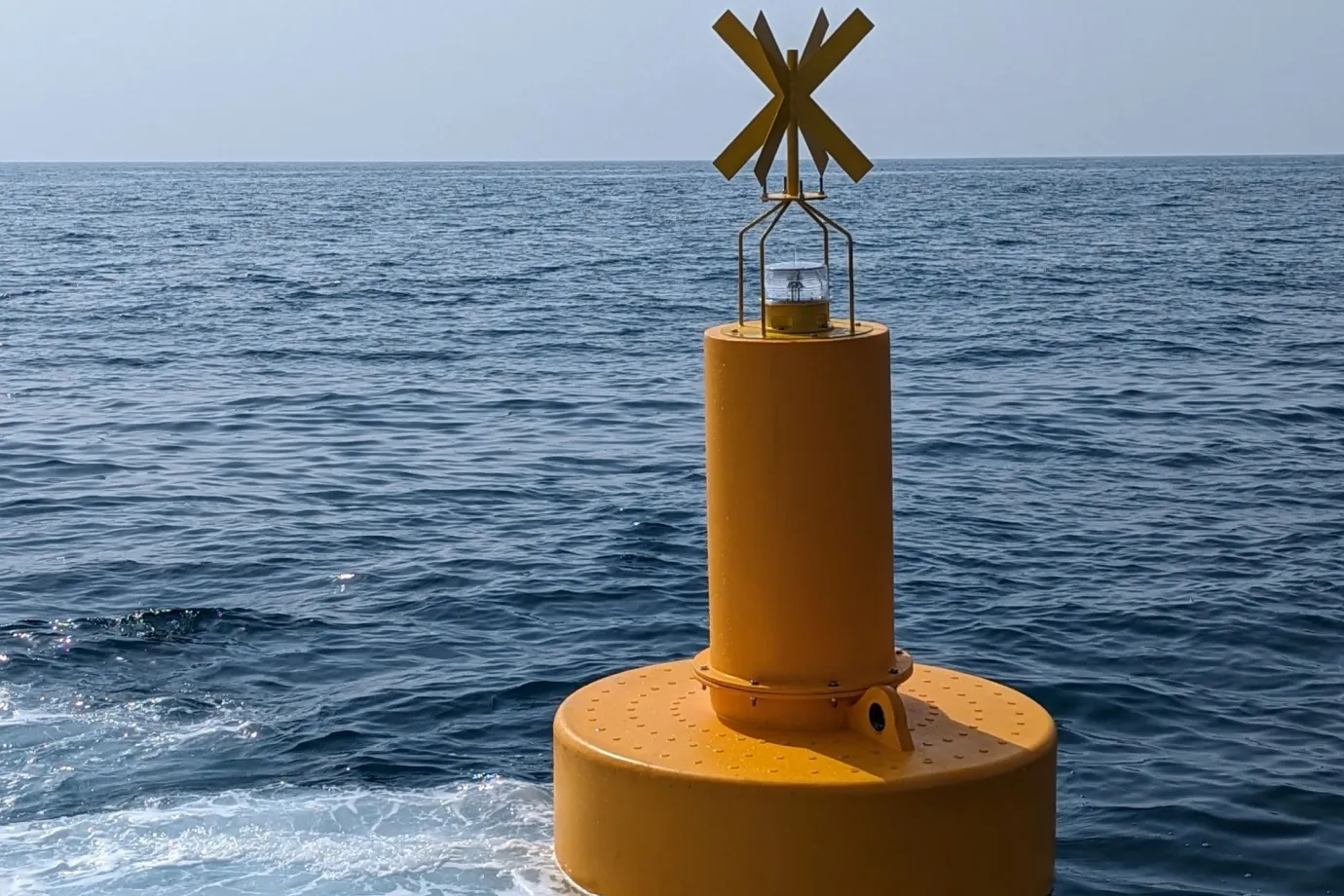Railway maintenance is important to the safety and effective provision of rail transportation services for passenger and freight transport without intermission. Rail networks are unique because they cover the extensive length of tracks with signals, electrical systems, and rolling stocks that must be monitored and maintained constantly. When neglected, rail systems are likely to be subjected to accidents, breakdowns, or costly time wastages, compromising safety.
In this blog post, we will look at the following types of railway inspection and maintenance equipment that are essential to keeping rail infrastructure enduring: From tools that scan for blind spots within tracks to equipment that addresses recurrent fixes, every form of equipment is not only different but specially created to prevent system failure before it happens. Knowledge of these tools is crucial to rail structures’ sustainability, safe operation, stability, and the least interference in operations.
The Importance of Railway Maintenance Equipment
Railway maintenance involves complex operations that require highly specialized maintenance equipment to ensure rail networks’ safety, efficiency, and longevity. Unlike standard tools, specialized railway maintenance equipment is designed to handle rail infrastructure challenges, including extensive tracks, heavy loads, and varied environmental conditions. For example, track geometry measurement systems ensure precise alignment of tracks, while ultrasonic testing machines detect internal rail defects that are invisible to the naked eye. These advanced tools help prevent accidents by identifying potential issues before they escalate into major problems.
Maintenance equipment increases the accuracy of inspections and speeds up the repair process, reducing railway downtime and avoiding costly delays. Rail grinding machines, for instance, smooth out rail surfaces to reduce friction and wear, prolonging the life of the track and improving train ride quality.
By investing in advanced equipment, railway operators can ensure smoother operations, fewer disruptions, and enhanced safety for passengers and workers. Ultimately, specialized maintenance equipment is essential for maintaining the integrity and performance of railway systems over time.
See also: “Different Types of Railway Maintenance“
Types of Railway Maintenance Equipment

Railway maintenance is crucial to the operation of the rail system, as it ensures safe and efficient service by passengers and carriers so that they operate without interruption. However, the rail network is a complex and continuing system of tracks, signals, electrics, and rolling stock, which must be monitored and serviced constantly. Rail systems are prone to accidents, breakdowns, and high-cost delays without proper maintenance, which impact safety and operational efficiency.
Railway inspection and maintenance are specialized fields, and in this part, we’ll explore the different types of rail infrastructure inspection and maintenance equipment. Different types of specialized equipment detect hidden flaws in tracks and equipment for routine repair; each kind of specialized equipment has its scale of work but does not allow issues before they occur. Developing and implementing these tools is essential for rail systems’ long-term safety and reliability and minimizing operations disruptions.
Track and Rail Inspection Tools
The first step in railway maintenance is a thorough inspection, as identifying defects early can prevent major issues from arising. Track and rail inspection tools are essential for ensuring the structural integrity of the rails and track beds. Various railway maintenance equipment is used to identify wear, damage, or defects in the tracks.
1- Ultrasonic Testing Machines: These machines are vital for detecting internal flaws in rails, such as cracks and fatigue, which are invisible to the naked eye. Ultrasonic testing works by sending high-frequency sound waves into the rail, identifying any anomalies in the material. If undetected, these defects could lead to rail breaks and derailments.
2- Rail Profiling Systems: These tools measure the wear on the railhead, ensuring that it meets operational standards. Rails wear down over time due to the constant pressure from train wheels, and excessive wear can lead to unsafe conditions. Profiling systems allow maintenance crews to assess whether rails need to be ground down or replaced.
Explore our “ballast regulator“, engineered for optimal ballast profiling, shoulder shaping, and maintenance efficiency in high-traffic corridors.

3- Track Geometry Measurement Systems: Proper alignment of railway tracks is essential for smooth and safe train operations. Track geometry measurement systems assess the track’s gauge, cross-level, and curvature. These systems can quickly detect any misalignments or deviations from the standard track geometry, which can otherwise lead to derailments or bumpy rides.
4- Ground Penetrating Radar (GPR): GPR systems inspect the ballast condition and the layer of crushed stone beneath the tracks. Ballast must be well-compacted and free of voids to support the tracks properly. GPR detects issues like water infiltration, ballast fouling, or voids, ensuring the structural stability of the track bed.
5- Thermal Imaging Cameras: These cameras detect temperature-related issues such as thermal expansion, rail breaks, and track misalignments. Temperature variations can cause the rails to expand and contract, which may lead to structural damage. Thermal imaging helps detect these defects before they cause significant problems.
Track Maintenance Equipment
Track maintenance is as important as inspection, as it involves keeping the railway track in good condition. Several tools are used to repair and maintain the integrity of the tracks, ensuring they remain safe for train operations.
1- Tampers: Track tamping machines are essential for aligning and packing the ballast underneath railway tracks. By consolidating the ballast, tampers ensure that the tracks remain properly supported and stable, preventing any unwanted movement of the rails.
2- Ballast Regulators: These machines distribute and shape the ballast evenly along the railway tracks. They help maintain the track’s stability by ensuring the ballast is spread properly, which improves drainage and reduces wear on the tracks.
See also: “Ballast Regulator Machine Operating Principle.”
3- Track Grinders: Over time, rails develop surface defects such as corrugation, which can increase friction between the rail and the wheels. Track grinders are used to smooth these defects, reducing wear and tear and extending the lifespan of the rail. They also improve ride comfort and reduce noise levels.
4- Rail Replacement Machines: These machines replace damaged or worn-out rail sections. Rail replacement is a critical maintenance task that prevents accidents and improves the overall reliability of the railway system.
5- Rail Welding Machines: When rails are replaced or repaired, welding machines join the sections, ensuring a smooth and continuous track. Proper welding is essential to maintaining the integrity of the rails and preventing future breaks.
Rolling Stock Maintenance Equipment
Rolling stock, including locomotives, passenger coaches, and freight cars, requires regular maintenance to ensure safe and efficient operation. Several tools are specifically designed to service the various components of rolling stock.
1- Wheel Profile Measuring Systems: Train wheels are subjected to constant wear, and uneven wear can lead to derailments or inefficient operation. Wheel profile measuring systems use lasers or sensors to assess the condition of the wheels and determine whether they need to be reprofiled.
2- Brake Testing Systems: Properly functioning brakes are critical for train safety. Brake testing systems evaluate the performance of the braking systems in locomotives and railcars, ensuring they meet safety standards and function effectively.
Avoid costly failures and improve maintenance cycles with our proven “brake testing systems” for rail applications.

3- Axle Load Sensors: These sensors measure the weight distributed across rolling stock axles. Uneven axle loads can cause excessive wear on wheels and tracks, leading to increased maintenance costs and safety risks. Axle load sensors ensure even weight distribution, helping to prevent these issues.
4- Lifting Jacks: Lifting jacks raise locomotives or railcars off the track for maintenance tasks such as wheel or axle replacements. These powerful jacks are designed to handle the heavy weight of rolling stock safely and efficiently.
5- Automatic Train Wash Systems: Keeping trains clean is not just about aesthetics; dirt and debris can contribute to wear on various train components. Automatic train wash systems clean the exterior of rolling stock, reducing maintenance needs and extending their lifespan.
See also: “Rolling Stock Maintenance Cost in Railway Operations.”
Electrical and Overhead Line Maintenance Tools

The electrical systems of a railway are crucial for the operation of electrified trains and signaling systems. Regular maintenance of overhead lines and electrical systems is necessary to prevent power failures and ensure reliable service.
1- Overhead Line Inspection Vehicles: These specialized vehicles inspect and maintain overhead electrical lines that supply power to electric trains. They provide access to the lines, allowing maintenance crews to perform repairs and ensure the lines are free of damage or wear.
2- Pantograph Testing Systems: Pantographs are devices on electric trains that collect power from overhead lines. Pantograph testing systems ensure that the pantographs function correctly and maintain proper contact with the power lines, preventing power interruptions.
3- Track Circuit Testing Equipment: Track circuits detect trains on the tracks and manage signaling systems. Testing equipment ensures that track circuits function properly, preventing signal failures that could lead to train collisions or operational delays.
4- Insulation Testing Devices: These tools check the integrity of the insulation on overhead cables, ensuring there is no power leakage. Proper insulation is critical to preventing electrical failures and ensuring the safety of maintenance workers.
Signal and Communication System Maintenance Tools
Reliable signaling and communication systems are crucial for managing train movements and ensuring safety on the railway.
1- Signal Testing Devices: Railway signals must function correctly to provide accurate information to train operators. Signal testing devices verify the operation of these signals, ensuring that they display the correct indications and function without errors.
2- Radio Communication System Testers: Communication between trains and control centers is essential for coordinating train movements and managing railway traffic. Radio communication system testers ensure that the communication equipment is functioning properly, reducing the risk of miscommunication.
3- Remote Monitoring Systems: These systems provide real-time data on track circuits, signals, and other critical infrastructure performance. Remote monitoring allows railway operators to detect and address issues before they escalate, enabling proactive maintenance.
Specialized Maintenance Vehicles
Specialized maintenance vehicles are essential for large-scale maintenance across extensive railway networks. These vehicles are equipped with various tools for handling multiple maintenance tasks.
1- Multi-purpose Maintenance Vehicles: These vehicles have tools for track grinding, ballast cleaning, and rail welding. They are designed to be highly versatile, allowing crews to perform various maintenance activities without needing multiple machines.
Eliminate transport delays:
Our “hi-rail excavator” is designed for quick mode changes, keeping your crew productive wherever the job takes you.

2- Rail Cranes: Rail cranes are used for heavy lifting tasks, such as removing and replacing sections of track or overhead lines. They are critical for large-scale maintenance operations that require precise lifting and placement of heavy rail components.
3- Track Stabilizers: The track must be stabilized to remain secure after maintenance work, such as rail or tie replacement. Track stabilizers compact the ballast and ensure the track is properly supported, preventing future misalignments.
Challenges in Railway Maintenance

Maintaining railway systems is a complex and ongoing task that presents several challenges for operators. One of the most pressing issues is the wear and tear of tracks caused by heavy usage and environmental factors. Continuous exposure to weather conditions such as extreme heat, cold, and moisture can cause track degradation, leading to misalignments or rail breaks. These conditions require frequent inspections and maintenance to ensure safe operations.
Another challenge is the aging infrastructure. Many rail systems, especially in older regions, were built decades ago and require significant upgrades to meet modern standards. Replacing or refurbishing aging components like bridges, tunnels, and tracks can be costly and time-consuming.
Additionally, minimizing operational disruptions during maintenance activities is a constant concern. Railways must balance the need for regular maintenance with keeping trains running smoothly to avoid delays affecting freight and passenger services.
The introduction of new technologies poses both opportunities and challenges. While innovations like predictive maintenance tools and automated inspection systems offer better efficiency, they also require significant investments in equipment and training.
Finally, safety concerns for both workers and passengers demand constant vigilance. Implementing proper safety measures during maintenance tasks, particularly on busy tracks or during extreme weather, remains a critical challenge in the industry. Addressing these challenges requires technological advancements and a strategic approach to planning and investment.
See also: “Challenges and Innovations in Railroad Maintenance.”
Economic and Safety Benefits of Using Railway Maintenance Equipment
Investing in specialized railway maintenance equipment offers significant economic and safety advantages that contribute to the long-term sustainability of rail networks. One of the primary economic benefits is reducing downtime. Using advanced tools like track geometry measurement systems and ultrasonic testing machines, rail operators can detect issues before they escalate, preventing costly service interruptions. This proactive approach minimizes the need for emergency repairs, which are typically more expensive and disruptive to train schedules.
Regarding safety, specialized equipment such as rail grinders and ballast regulators help maintain tracks’ structural integrity, preventing derailments and accidents. Equipment designed for precise inspections, like ground penetrating radar (GPR) and vibration monitoring systems, ensures that hidden defects are addressed before they pose a serious risk to operations. Additionally, automated tools reduce the need for manual labor in hazardous environments, further enhancing worker safety by limiting exposure to dangerous conditions.
Another key economic benefit is extending the lifespan of infrastructure. Regular maintenance using specialized equipment ensures that assets like rails, wheels, and overhead lines remain in optimal condition, reducing the frequency of replacements and lowering overall lifecycle costs. Furthermore, modern tools help optimize maintenance schedules, allocating resources efficiently.
Conclusion
Railway maintenance is vital for ensuring the safety and efficiency of rail systems. Regular monitoring and maintenance become critical as rail networks expand, covering vast distances with complex infrastructure, including tracks, signals, electrical systems, and rolling stock. Without proper attention, rail systems are prone to accidents, breakdowns, and costly delays, compromising safety and operational performance.
The blog emphasizes the importance of specialized railway inspection and maintenance equipment, ranging from tools that detect hidden flaws within the tracks to machines designed for routine repairs. Each type of equipment plays a unique role in preventing system failures before they occur, thus enhancing rail infrastructure’s long-term sustainability and stability. By proactively identifying and addressing issues, such equipment minimizes operational disruptions and ensures smooth freight and passenger transport service. In conclusion, having the right tools and properly maintaining rail networks is essential for rail systems’ reliability and safety.




